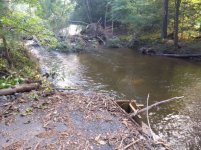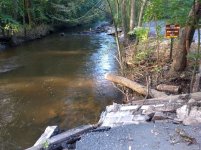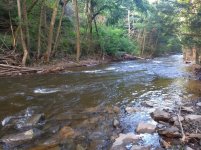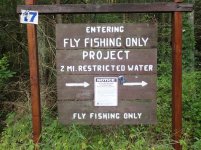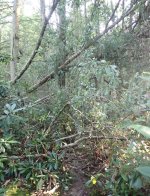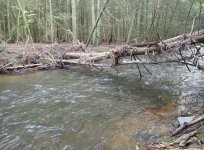krayfish2
Well-known member
I left for work a bit early this morning to take a look at Clarks Creek. I just went to the kids section near the RT 225 bridge. I was surprised by the level and turbidity. Nasty looking.
I simply picked a random section and snapped 3 photos. Photo one is looking upstream and a mess of roots and trunks. Where I'm standing, there used to be a bridge. Photo two is the same location looking downstream at more logjams. Photo three is in front of the hatchery in the kids section. Looks to be trees in the water every 20-25 yards. Not looking good at all. I may drive over and check out the fly section after work. I can't imagine it's very pretty with the amount of trees that were already fallen in that section. Just don't feel like risking a tick hitchhiker to simply look at a place I'll never fish again. lol.
I simply picked a random section and snapped 3 photos. Photo one is looking upstream and a mess of roots and trunks. Where I'm standing, there used to be a bridge. Photo two is the same location looking downstream at more logjams. Photo three is in front of the hatchery in the kids section. Looks to be trees in the water every 20-25 yards. Not looking good at all. I may drive over and check out the fly section after work. I can't imagine it's very pretty with the amount of trees that were already fallen in that section. Just don't feel like risking a tick hitchhiker to simply look at a place I'll never fish again. lol.

